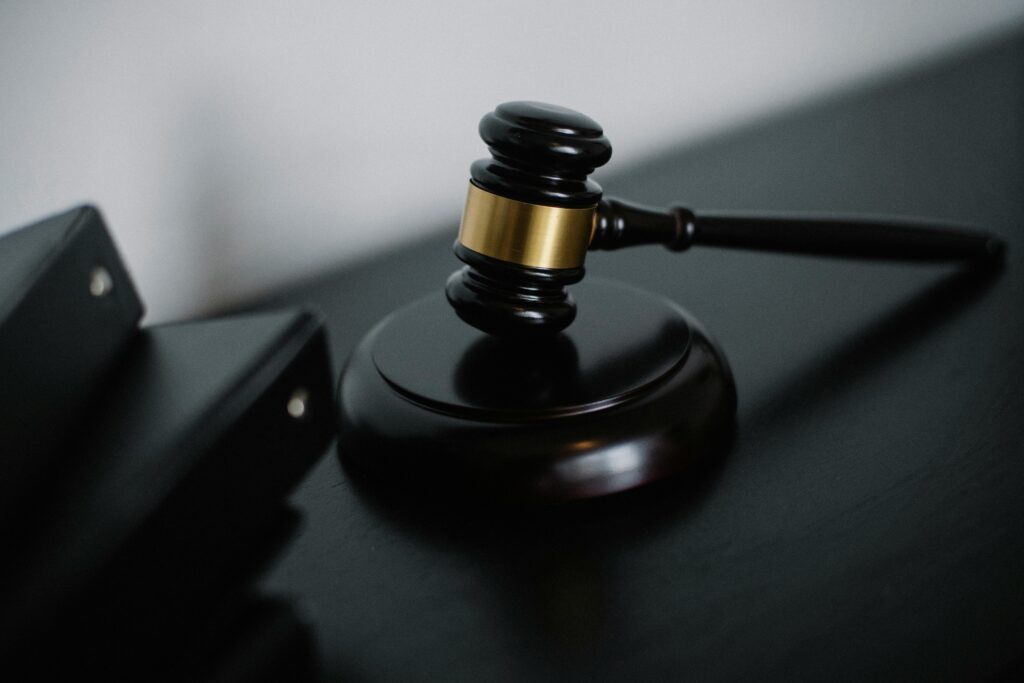Published On: November 4th 2025
Authored By: Patel Krishna Natubhai
Faculty of Law, The Maharaja Sayajirao University of Baroda
Abstract
In today’s digital age, people rely on the digital platforms for day-to-day activities such as bank transactions, investment, loan etc. however, it has both advantages and disadvantages and also presents what are the challenges particularly in the realm of cybercrime. Digital evidence information stored, transmits in electronic devices that is used in the investigations and court proceedings to prove the facts. It includes data like messages, photos, videos, and internet search histories, all of which leave a “Digital Footprint” on electronic devices.
In the past few decades, the use of digital evidence is increased during the COVID-19 pandemic as more transactions and communications shifted online. The court has allowed the use of Emails, GPS track system, e-documents and message histories. The most difficult part is to prove the authenticity and integrity. Without proper verifications such evidence can be questioned in court. Digital evidence is important in the legal cases, cybersecurity, corporate investigations. This article is giving insights of digital evidence, cybercrime, related laws, sections and landmark judgements regarding the admissibility of digital evidence and also talks about the challenges faced during the Cybercrime Investigation.
Introduction1
Electronic evidence is also called as Digital Evidence. According to the oxford, digital means the operating with signals or information, represented by numeric value, commonly it is represented 1 and 0 and signal opposed to analogue.
Cybercrime consists of various offences such as cyber bullying, cyber forgery, identity theft, cyber hacking, data theft, etc. In order to classify any act as cyber offence that illegal activity involving computer, network, or other electronic devices, must be declared an offence. For such an act to constitute a crime, actus reus should be present except in the cases of offence against state such as Cyber terrorism where even one component is sufficient.
The investigation of these crimes relies entirely on the digital evidence: chat messages, emails, server logs, and CCTV footage that form the electronic evidence. In court, the validity of the digital evidence is based on relevancy, authenticity, and integrity.2 Over the time, the laws have evolved from the Indian Evidence Act, 18723 to the Information Technology Act, 20004 and now the Bhartiya Sakshya Adhiniyam, 20235, which addresses challenges of digital evidence.
NBC Reports shows that cybercrime cases in India are increasing every year especially after COVID-19. Due to this, now digital evidence has become more important in criminal cases.
1) Statutes:
The Indian Evidence Act, 1872
Section 65B: talks about the certificate requirement for electronic records. There were several conditions were mentioned.6
Section 65B says that any information contained in an electronic record which is in printed on paper, stored, recorded or copied by a computer shall be deemed to be document.7
The Information Technology Act, 2000: main objective of this act is to give legal recognition to electronic documents, digital signatures. It facilitates e-fillings of documents with govt. departments and also facilitates electronic storage of data, legality of electronic fund transfer.
Section 79A8: which was amended in 2008 talks about the necessity for the central government to appoint an examiner of electronic evidence. Examiner appointed to give expert suggestions on electronic evidence in the court or other authorities. It also ensures expert verification for the electronic evidence.
The Bhartiya Sakshya Adhiniyam, 2023
The Indian Evidence Act, 1872 was replaced with the Bhartiya Sakshya Adhiniyam, 2023 to accommodate the inclusion of digital evidence reflecting the importance of technological advancements in legal proceedings.9
Section 57: talks about primary evidence. That includes electronic evidence.
Section 62: talks about the special provisions as to evidence related to e records. This section lays down the legal condition for admissibility of electronic evidence as per the provision of Section 63.
Section 63: talks about the admissibility of electronic records. Any information in electronic record be it in any form shall be deemed to be a document and if the condition mentioned are satisfied it will be admissible in proceedings without giving the proof of original.
Conditions:
- It is produced by a computer or computer network which it used
- The information derived was fed in ordinary course of
- Throughout that period the device was operating properly and if it wasn’t working properly, it didn’t impact such records.
- Any information reproduced from that computer was taken in ordinary course of 10
Along with these laws, the CrPC11 Sections 91-92 empowers court to summon digital records, Now, replaced with Section 94, 95 of the Bharatiya Nagarik Suraksha Sanhita, 202312. The CERT-In Rules, 2013 guides intermediaries in data retention. The Budapest Convention is global benchmark for cybercrime, though India has didn’t signed yet.
2) Landmark Cases
- State vs. Navjot Sandhu (2005): This case is about how electronic evidence is produced in front of the court without the requirement of certificate under Section 65B of the Indian Evidence Act.13
- Anvar P.V. vs. P.K. Basheer (2014): This case is a landmark decision by the Supreme Court of India regarding the admissibility of electronic evidence. The court held that any electronic records used as evidence in court must be accompanied by certificate under Section 65B of the Indian Evidence Act. This certificate ensures the authenticity and reliability of electronic evidence.14
- Tomaso Bruno vs. State of UP (2015): In this case, SC emphasized that CCTV Cameras and electronic evidence can be more reliable and authenticate.15
- Shafi Mohammad vs. State of Himachal Pradesh (2018): This case dealt with the rules around using electronic evidence in court. The court clarified that the usually requiring certificate under Section 65B isn’t always necessary. This decision made a bit easier to admissible electronic evidence except in certain situations.16
- Paramvir singh Saini vs. Baljit singh (2020): This case revolves around the implementation of the CCTV cameras, oversight committees, and directives issued by Supreme Court of India.17 This case is about the installation of CCTV Cameras in the police stations to ensure transparency and prevent human Because of this, it’s easier for offenders to commit crime and hard to prove digital evidence in court as there is a risk of personal data and privacy of any individual.18
- Arjun Panditrao Khotkar vs. Kailash Kushanrao Goratyal (2020): This case revolves around the admissibility of electronic evidence in court. The Supreme Court clarified that under Section 65B(4) of the Indian Evidence Act, 1872 is mandatory for electronic records to be admissible as evidence.19
- Bharat jatav vs. state of Madhya Pradesh (2021): In this case, the Hon’ble high court emphasized the importance of technology in forensic science and also held that the scope of forensic science extended beyond the DNA and blood sample reports. Therefore, there is a need of awareness in the technology of forensic science by the police officers, trial judges, and public prosecutor. 20
3) Real-world Challenges
Key Consideration Challenges:
Firstly, Integrity: digital evidence can be easily modified or erased from the electronic device. It is very important to handle the evidence carefully to ensure its authenticity.
Secondly, chain of custody: a detailed records of who will handle the evidence and produce Infront of the court.
Thirdly, preservation: forensic science is used for the securing the originality for the analysis.
Fourthly, volatility: some digital information is available for the limited time, and can be replaced or updated, so it’s very important to collect it quickly.
Admissibility of digital evidence challenges: Digital evidence is itself a larger storage media and components from this extracting the piece of information that is relevant is the biggest challenge. All the evidence cannot be collected manually as it will time consuming and not possible. There should be a forensic investigator who should be responsible for the collection of evidence. It should be able to prove where the crime was committed otherwise it wouldn’t be worth it. To check whether the digital evidence is modified, deleted or valid evidence that should be ensure before producing evidence in front of the Hon’ble Court.
Technical challenges are rising with advancement of technology. Deepfakes is the fake audio/video that closely mimic real person pose new verification challenges. Metadata should be correctly interpreted to establish timestamps, and geolocation data authenticity. Cybercrime is borderless. Where the offence affects in India but is committed in other country. This creates judicial and legal complexities. Another problem is inconsistent court decisions on Section 65B certificates, which creates a confusion at the trial level. Delay in forensic reports and lack of cooperation foreign tech companies also creates hurdles in admissibility.
4) Suggestions
There should be a mandatory and continuous training programs for the police officers, prosecutors, and judicial officers on the refinement of collecting, preserving and presenting digital evidence. There should be an expansion of specialized digital science laboratories and appointing more examiners of electronic evidence. There should be public awareness campaigns on the data privacy, digital rights and responsibility. International cooperation for the borderless cybercrime. Need to invest in the AI forensic tools to detect deepfakes and other digital manipulations that is difficult to spot with the naked eye. India should also ratify the Budapest Convention and issue clear SOPs for handling and preserving e-records.
5) Conclusion
Technology has two sides of the coin. On One hand, it is used to protect the lives and other side, some people are misusing it for their own purposes. Digital Technology is growing day by day whether it is about the all facets of life, including criminal activity including hacking, scams, tampering evidence or data, in the recent times. Technology has become more advance and cybercrimes poses a significant threat to society. Cybercrime investigation majorly based on the digital evidence stored in the electronic device. Digital evidence is essential to admissible in the cybercrime investigations in India. Information Technology and India Evidence Act is the two major acts that deals with the admissibility of the evidence, data tempering etc.21
In India, there is no data privacy law till date. Two years since the Digital Personal Data Protection Act, 2023 received president’s assent and was published in the official gazette. Because of this, cybercrime and misuse of personal data are increased. This also makes difficult to admissible digital evidence in court and at the same it raises the serious concerns about the privacy of consumers. Strengthening laws, better trained forensic teams, and well-prepared judges to protect people’s privacy and ensuring justice is served in the digital age.
References:
1 iPleaders, ‘All about Digital Evidence’ (iPleaders, 18 May 2022) https://blog.ipleaders.in/all-about-digital- evidence/#Indian_Evidence_Act_1872 accessed 9 September 2025
2 ‘Admissibility of Digital Evidence for Cyber Crime Investigation’ (2023) 10(5) IJSRST https://ijsrst.com/paper/12484.pdf accessed 9 September 2025
3 The Indian Evidence Act, 1872, Act No. 1 of 1872
4 The Information Technology Act, 2000, Act No. 21 of 2000
5 The Bhartiya Sakshya Adhiniyam, 2023, Act No. 47 of 2023
6 The Indian Evidence Act, 1872, (Act No. 1 of 1872), §. 65B
7 MCRHRDI, ‘IT Act 2000 – Digital evidence’ (MCRHRDI) https://www.mcrhrdi.gov.in/FC2020/week11/IT%20Act%202000%20-%20Digital%20evidence.pdf accessed 11 September 2025
8 The Information Technology Act, 2000, (Act No. 21 of 2000), §. 79A
9 ‘(PDF) Admissibility of Digital Evidence for Cyber Crime Investigation’ (2023) SSRN Electronic Journal https://papers.ssrn.com/sol3/papers.cfm?abstract_id=4977238 accessed 11 September 2025
10 The Bhartiya Sakshya Adhiniyam, 2023, (Act No. 47 of 2023), §. 57, 62, 63
11 The Code of Criminal Procedure 1973, Act No. 2 of 1974, §. 91, 92
12 The Bharatiya Nagarik Suraksha Sanhita, 2023, Act No. 46 of 2023, §. 94, 95
13 State vs. Navjot Sandhu [2005] 11 SCC 600
14 Anvar P.V. vs. P.K. Basheer and Others [2014] 10 SCC 473
15 Tomaso Bruno & Anr vs. State of UP [2015] 7 SCC 178
16 Shafhi Mohammad v. State of Himachal Pradesh, [2018] 2 SCC 801
17 The Amicus Qriae , ‘Paramvir Singh Saini vs Baljit Singh & Others’ (The Amicus Qriae) https://theamikusqriae.com/paramvir-singh-saini-vs-baljit-singh-others/ accessed 11 September 2025
18 Paramvir Singh Saini vs Baljit Singh [2021] 1 SCC 184
19 Arjun Panditrao Khotkar vs. Kailash Kushanrao Gorantyal (2020) SCC OnLine SC 461
20 Bharat Jatav v. State of M.P., 2021 SCC OnLine MP 2111




